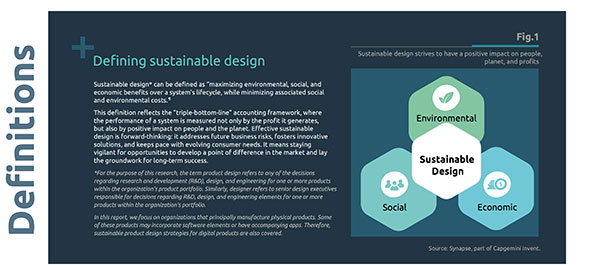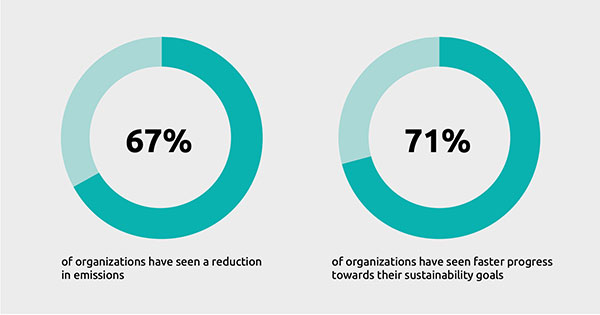Electronic Design: Boosting Lifespan and Repairability
The increasing problem of electronics waste and demand for affordable tech call for devices that can be repaired more easily and inexpensively.

Building a reputation for quality devices that work in the long run helps advance sustainability efforts overall. Image courtesy of Dassault Systèmes.
Latest News
November 14, 2022
The lifespan of many consumer electronics has shrunk significantly over the past several decades. As technology advancements accelerate, devices become obsolete more quickly. The low cost of many devices results in them being treated as disposable. However, the growing problem of electronics waste disposal and demand for more affordable and repairable tech drive use cases for devices with a longer shelf life and the ability to be updated and repaired more easily by consumers or third parties.
In many cases, the demand for electronic devices has afforded manufacturers economies of scale and driven down the cost. If the television breaks, get a new one.
But electronic device disposal has its own problems. Electronics as waste can be hazardous. Many people don’t have an appetite for a new purchase or a new product when their old one worked just fine. Electronics manufacturers and designers are pushing to design with a longer lifespan of electronics in mind, as well as the capability to make basic repairs, should electronic devices fail.
Circular Design
Ben Thompson, director of sustainable business for Autodesk says leaders are recognizing a shift in consumer demand and are prioritizing sustainability—considered by many as a mark of increased value. To achieve this, they’re taking several different approaches.
“Product designers and manufacturers are, first and foremost, starting to make design decisions to reduce the impact while improving the performance of electronic goods,” says Thompson. “This is an attempt to overcome the negative impacts of fast fashion electronics. Strategies for doing so include streamlining the resources used to make devices (through better manufacturing that results in less waste, for instance), increasing the quality of the resources going into the devices, and improving the processes to produce and distribute them.”
Manufacturing a product that may be used to lessen the shipping required to deliver to a customer is one example of improving the process of distribution.
“Products that prioritize these methods to reduce greenhouse gas emissions are often seen as higher quality by consumers and are given a bump in preference thanks to ecolabels such as Amazon’s Climate Pledge badge,” Thompson says.
He also sees a trend towards circular design, which facilitates electronics to not only last longer, but also to easily be put back in service if it fails.
“An approach that is becoming increasingly popular is designing electronics for circularity, enabling both easier repair and modularity, and ultimately the disassembly and recovery of product materials and components. ‘Circular design’ or ‘circularity’ aims, from the earliest stages of designing a product, to keep the product useful for the longest possible period of time, as well as keep its components and materials at their highest possible value throughout the product’s life so they can then go on to be used in a subsequent, high-value product,” Thompson says.
“In a perfect circular design, nothing goes to waste (nor to recycling)—but all materials and components are instead used in future products. This doesn’t typically happen; usually something goes to recycling, but the attempt is made, and the product is designed to not degrade its materials.”
Stephen Jorgenson-Murray is a marketing specialist for Dassault Systèmes’ SIMULIA. Historically, he notes, until about the 2000s, most computing devices could be repaired and upgraded relatively easily. Anyone could replace a broken drive, add more memory or upgrade an obsolete processor with just a screwdriver and basic technical skills.
Piece-By-Piece Repairability
“The rise of portable devices like smartphones and laptops meant that size and weight became bigger concerns, and repairability took a back seat. For example, you can make a thinner, lighter device if you solder all the components to a single board, use glue instead of screws, or incorporate custom components with unusual form factors, completely limiting the ability to upgrade the device,” says Jorgenson-Murray. “This has intensified the cycle of obsolescence, and the lack of repairability means if one part breaks, the whole device becomes unusable. Still, many manufacturers have not worried about this because they believe it generates more sales—in the short term, at least.”
But Jorgenson-Murray also feels there has been a turnaround in recent years, driven by a mixture of technical advances, government regulation and pressure from consumers and environment, social and governance (ESG) investors.
“Companies realize that a reputation for low-quality devices hurts their brand in the longer run—and that the ability to replace a cracked screen or a failing battery contributes to the perception of device quality and harms the manufacturer’s sustainability record,” he explains. “There are a few design trends that manufacturers can follow to make devices more repairable while maintaining the weight and form factor that consumers expect.
“Modularity, for instance, allows manufacturers to build devices with packages of components that can be individually removed and replaced, such as separating the screen and battery of a phone from the motherboard,” Jorgenson-Murray adds. “Using screws or clips instead of glue is another one. Connectors based on thin, flexible printed circuit boards (PCBs)—which are lightweight and bend to fit the space available but can be unplugged and removed like cables—have also become standard, making it easier to replace individual components.”
Martine Stillman is the vice president of engineering at Synapse, which is part of Capgemini Invent. She says that as engineers, the quest presses on to create reliable and transformative products and technologies that last.

“Being able to break down a product’s purpose and establish its intentions allows us to be able to construct the proper design for its given purpose,” she emphasizes.
Stillman cites new research (bit.ly/3RBwpuE) from Capgemini that shows while 80% of a product’s environmental impact depends on decisions made during the design stage, just 22% of companies are making sustainability a key component of product design. Only 16% of product designers say they have an accurate understanding of the useful life of their products, though the benefits being realized by companies that implement sustainable design strategies are clear—higher rates of revenue growth and a reduction in carbon emissions.

It’s important for companies to factor in waste and when consumers are likely to dispose of the product when creating new products. Image courtesy of Capgemini.
“Ensuring that we are producing sustainable products relies on the client’s wants and needs for the end product. For example, if we build something to last five years, but the client estimates that a customer will want to get rid of it in two years, we will have wasted resources in overbuilding. So there is a complex relationship between the customer, the designer and the environment,” Stillman explains.
“When we begin the initial design process, we first identify the primary ‘hot spots’ within the original product design, she adds. “By doing so, this allows us to accurately and efficiently sculpt the design of the product to reduce its highest environmental impact, therefore elevating the sustainability of the product, without degrading the integrity of the design nor its lifespan.”
Considering the Future of Electronic Design
Looking forward, it’s likely that supply will change to meet demand, and designs will become more repairable and recyclable.
Autodesk’s Thompson adds that the demand for the right to repair is, without doubt, growing. He says take-back programs, even when facilitated by robotic disassembly, are no longer sufficient.

“Groups like iFixit have championed the right-to-repair initiative, made it easier for consumers to repair their electronics and rallied change by electronics manufacturers. They’ve even partnered with manufacturers to make repairability happen,” Thompson says. “Emerging right-to-repair laws demonstrate how mature this trend is, which is putting pressure on electronics designers and manufacturers.”
But he’s optimistic that manufacturers are aware of the overall challenges in making their devices repairable and are incorporating various configurations to enable this.
“From a practical standpoint, hybrid components that are laminated, unrepairable and unsalvageable remain a roadblock to circularity, but we are seeing the beginning of progress in both business models and design,” he says. “Most recently, major consumer electronics brands have launched repair initiatives and design choices for flagship products that make it easier to repair or replace some components. Modularity is another important design technique that is seeing varying levels of success across subsectors such as power tools and personal electronics. As components become obsolete or break, those individual components can easily be replaced instead of the whole product being thrown away. This approach can actually enhance the product—like increasing the performance of a computer by adding RAM or a faster CPU—and create even more value than before.”
Jason Forsyth is an engineering professor at James Madison University in Harrisonburg, VA. Though he agrees that repairability and obsolescence influence electronic design, there are many different concerns that factor into how devices are designed.
“Pressure to upgrade hardware and to continue to sell additional units are the driving force for causing technology to be very replaceable or disposable,” says Forsyth. “The challenge of repairability is similar in that there may be corporations that do not wish to enable their systems to be repaired such that more units can be sold. Additionally, there may be intellectual property and security concerns that resist the release of software, hardware schematic, system designs, [and so on] that would be required to truly implement ‘repairable’ systems.”
But Forsyth says the most difficult element of a design to change is the hardware.
“Once the boards are assembled and deployed, it is near impossible to change. However, software can be easily updated to increase new capabilities and resolve previous issues,” he says.
“I would recommend [that] designs place the best hardware possible in the system and continually enhance the software to achieve the best performance over time. It is unlikely we can stop the market forces and ‘design for obsolescence’ cycles that drive consumer electronics. Additional emphasis should be placed on harvesting and recycling electronics materials such that they can be reused in future designs,” Forsyth says.
More Autodesk Coverage
Subscribe to our FREE magazine, FREE email newsletters or both!
Latest News
About the Author
Jim Romeo is a freelance writer based in Chesapeake, VA. Send e-mail about this article to [email protected].
Follow DE






